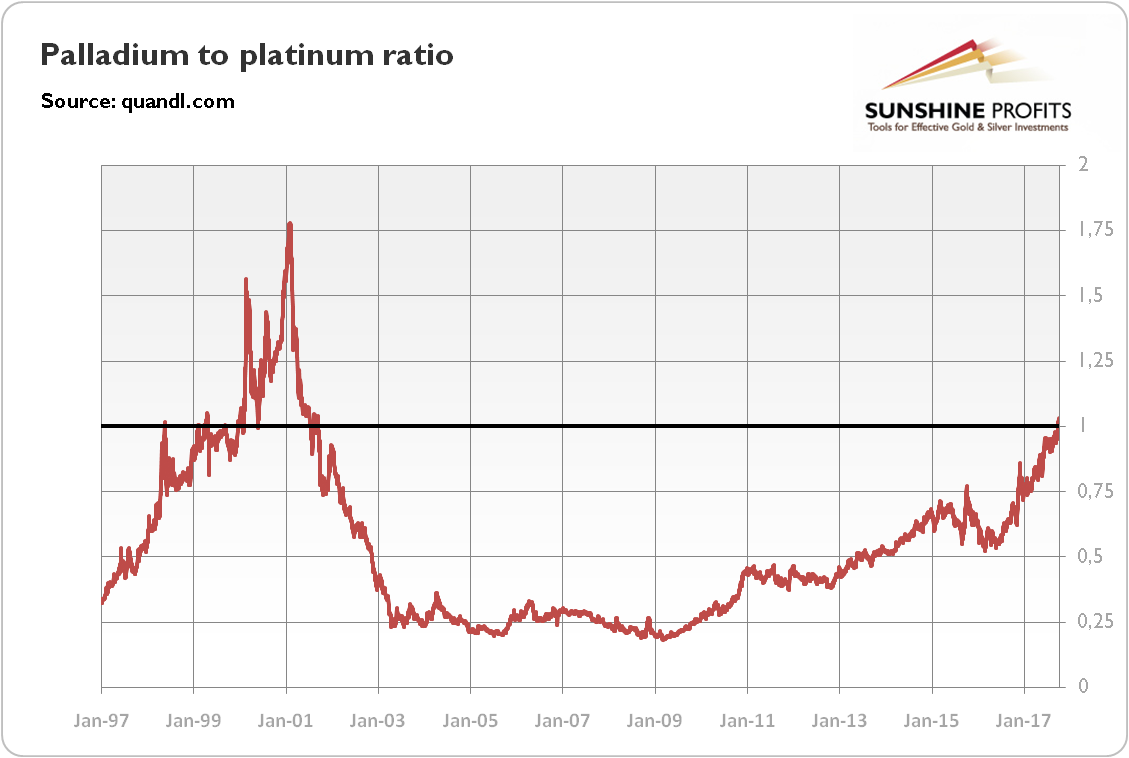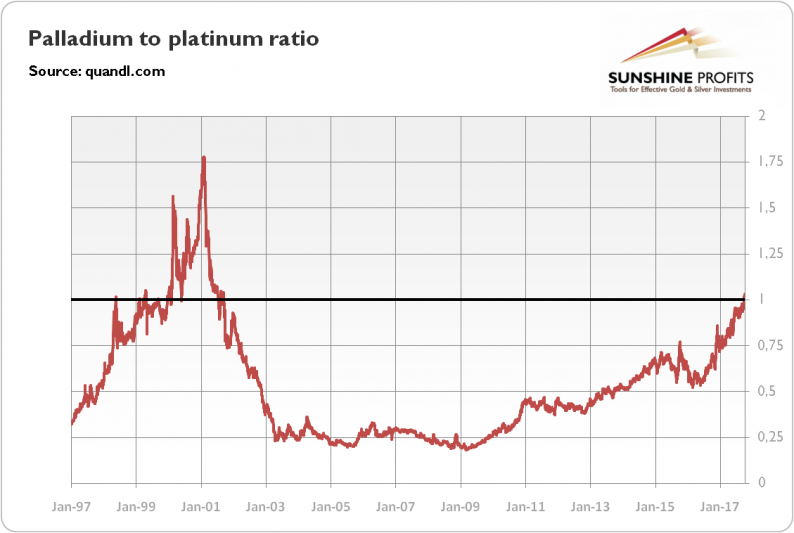At the end of September, the price of palladium became higher than the price of platinum. What does it mean for the precious metals market?
Initially, we wanted to provide investors with an update on Catalonia, but Catalan President Carles Puigdemont rescheduled the session of the Catalan Parliament for today. We will cover the developments in Spain in tomorrow’s Gold News Monitor, while today we focus on the historical development in the precious metals market.
On September 28, palladium prices moved above those for platinum for the first time since 2001, as one can see in the chart below. Yesterday, platinum cost $911 per ounce, about $11 less than palladium.
Chart 1: Palladium-to-platinum ratio over the last ten years.

For some analysts it was a surprise, but not for us. In the August edition of the Market Overview, we argued that given the demise of diesel vehicles, platinum was “likely to continue its underperformance relative to other precious metals.” We did not believe in the rebound in platinum prices, so we wrote:
“investors should not count on platinum prices rebounding and jumping above the price of gold again. Actually, the price of platinum may reach parity with palladium soon, which is mainly used in gasoline vehicles, or even decline below the price of its cousin.”
It turns out that we were right, contrary to those who called for mean reversion, i.e. that the spread between metals would eventually recover towards the long-term mean. However, the concept of the long-term mean is meaningless in a dynamic world. As a reminder, there is structural change ongoing in the automotive sector (the demise of diesel technology and the electric revolution). Thus, although platinum could eventually recover somewhat, we seriously doubt whether it would regain its status of “rich man’s gold”. The ratios of platinum to gold or to palladium are not set in stone. The historical averages are useless as investors are forward-looking.












Leave A Comment